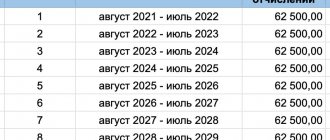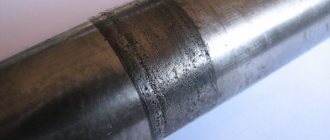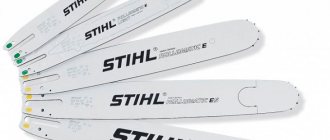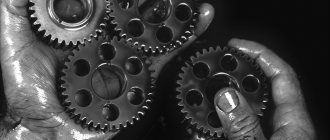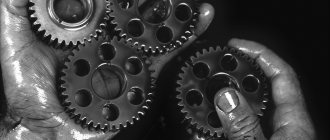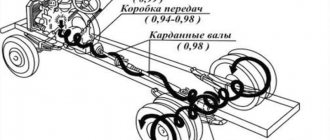Fixed assets serve production, as a rule, for several years, and are reused many times. During service, they gradually lose their qualities, wear out, and lose value. This process must be subject to ongoing accounting because the value of fixed assets must appear on the balance sheet. When the process reaches the end, the fixed asset must be reimbursed (replaced).
Let's consider what is meant by the process of physical and moral depreciation of fixed assets, how the accounting process occurs, and how to correctly reflect depreciation.
Wear detection
Wear, or aging, is a gradual decrease in the performance characteristics of products, components or equipment as a result of changes in their shape, size or physical and chemical properties. These changes occur gradually and accumulate during operation. There are many factors that determine the rate of aging. Negatively affects:
- friction;
- static, pulsed or periodic mechanical loads;
- temperature conditions, especially extreme ones.
The following factors slow down aging:
- Constructive decisions;
- use of modern and high-quality lubricants;
- compliance with operating conditions;
- timely maintenance, scheduled preventative repairs.
Due to a decrease in performance characteristics, the consumer cost of products also decreases.
How to evaluate them?
Fixed assets are valued in kind and in money. The first type of accounting is applied separately for each component; it is connected:
- with production facilities;
- general level of technical equipment;
- equipment that is on the balance sheet of the manufacturer.
Of course, physical and moral wear and tear of fixed assets will have a significant impact on this indicator - their condition depends on it. Cost (or monetary) valuation is done on a physical basis and is used for budget planning, taking into account all necessary expenses.
Types of wear
The rate and degree of wear is determined by friction conditions, loads, material properties and design features of products.
Classification of types of wear
Depending on the nature of external influences on the materials of the product, the following main types of wear are distinguished:
- abrasive type - damage to the surface by small particles of other materials;
- cavitation, caused by the explosive collapse of gas bubbles in a liquid medium;
- adhesive appearance;
- oxidative species caused by chemical reactions;
- thermal view;
- fatigue appearance caused by changes in the structure of the material.
Some types of aging are divided into subtypes, such as abrasive.
Abrasive
It consists in the destruction of the surface layer of the material during contact with harder particles of other materials. Characteristic for mechanisms operating in dusty conditions:
- mining equipment;
- transport, road construction mechanisms;
- Agreecultural machines. Agreecultural equipment;
- construction and production of building materials.
Abrasive wear
You can counteract it by using special hardened coatings for rubbing pairs, as well as by promptly changing the lubricant.
Gas abrasive
This subtype of abrasive wear differs from it in that solid abrasive particles move in the gas flow. The surface material crumbles, is cut off, and is deformed. Found in equipment such as:
- pneumatic lines;
- fan and pump blades for pumping contaminated gases;
- domain installation nodes;
- components of solid fuel turbojet engines.
Often, gas abrasive effects are combined with the presence of high temperatures and plasma flows.
Download GOST 27674-88
Waterjet
The effect is similar to the previous one, but the role of the abrasive carrier is performed not by a gaseous medium, but by a liquid flow.
Water-abrasive type of wear
The following are susceptible to this effect:
- hydrotransport systems;
- hydroelectric power station turbine units;
- components of washing equipment;
- mining equipment used for washing ore.
Sometimes waterjet processes are aggravated by exposure to an aggressive liquid environment.
Cavitation
Pressure drops in the liquid flow flowing around the structure lead to the appearance of gas bubbles in the zone of relative rarefaction and their subsequent explosive collapse with the formation of a shock wave. This shock wave is the main active factor in the cavitation destruction of surfaces. Such destruction occurs on the propellers of large and small ships, in hydraulic turbines and technological equipment. The situation can be complicated by exposure to an aggressive liquid medium and the presence of an abrasive suspension in it.
Cavitation type of wear
Adhesive
With prolonged friction, accompanied by plastic deformations of the participants in the rubbing pair, periodic convergence of surface areas occurs at a distance that allows the forces of interatomic interaction to manifest themselves. The interpenetration of atoms of substance of one part into the crystalline structures of another begins. Repeated occurrence of adhesive bonds and their interruption lead to the separation of surface zones from the part. Loaded rubbing pairs are subject to adhesive aging: bearings, shafts, axles, sliding bearings.
Adhesive type of wear
Thermal
The thermal type of aging consists of the destruction of the surface layer of a material or a change in the properties of its deep layers under the influence of constant or periodic heating of structural elements to the plasticity temperature. Damage is expressed in crushing, melting and changing the shape of the part. Characteristic for highly loaded components of heavy equipment, rolls of rolling mills, hot stamping machines. It can also occur in other mechanisms when the design conditions for lubrication or cooling are violated.
Fatigue
Associated with the phenomenon of metal fatigue under variable or static mechanical loads. Shear stresses lead to the development of cracks in the materials of parts, causing a decrease in strength. Cracks in the near-surface layer grow, unite and intersect with each other. This leads to erosion of small scale-like fragments. Over time, this wear can cause the part to fail. It is found in components of transport systems, rails, wheel sets, mining machines, building structures, etc.
Fatigue wear
Fretting
Fretting is the phenomenon of microfracture of parts in close contact under conditions of low-amplitude vibration - from hundredths of a micron. Such loads are typical for rivets, threaded connections, keys, splines and pins connecting parts of mechanisms. As fretting aging increases and metal particles peel off, the latter act as an abrasive, aggravating the process.
Fretting
There are other, less common specific types of aging.
7.4. Damage to gears
The performance of the gearing is influenced by the following external factors:
- The value of the applied force load
determines the following nature of damage on the working surface:- the nominal load does not lead to a change in the shape of the tooth and does not leave traces of deformation on the working surface of the gear (Figure 7.18);
Figure 7.18 – Absence of deformation – a sign of exposure to rated load:
a) working surface of the teeth;
b) end surface of teeth
variable or alternating forces lead to the appearance of stresses on the contact areas that exceed the endurance limit of the material, leaving pockmark-like depressions on the working surface caused by material fatigue (Figure 7.19);
Figure 7.19 – Exceeding the endurance limit of the material leads to small-scale chipping of the working surface:
a) initial stage;
b) further development;
c) limit state
- the nominal load does not lead to a change in the shape of the tooth and does not leave traces of deformation on the working surface of the gear (Figure 7.18);
- plastic shifts on the working surface of the teeth occur when the stresses acting on the contact areas exceed the yield strength, the surface layer of the metal moves from the pitch diameter to the top of the tooth, forming a protrusion (Figure 7.20);
Figure 7.20 – Plastic shifts on the working surface of the gear – stresses on the contact areas have exceeded the yield strength:
a) initial stage;
b) further development
- The nature of the applied force load
associated with the constancy or inconstancy of the rotation speed, a change in the direction of rotation, and the value of the dynamic component. Dynamic impacts often lead to tooth fractures (Figure 7.21). As the rotation speed increases, the requirements for the accuracy of manufacturing and installation of gears increase, otherwise tooth wear increases. In non-reversible gears, it is imperative to inspect the reverse (non-working) surface of the tooth. It may show manufacturing or installation errors. For example, due to a small side clearance, contact marks may appear on the back surface of the tooth (Figure 7.22).Figure 7.21 – Fracture of teeth due to dynamic impacts
Figure 7.22 – Contact patch on the non-working surface of a wheel tooth
- The presence of abrasive particles or substances that cause corrosion,
leads to abrasive wear, corrosion of the tooth surface, and contributes to the occurrence of gas or liquid erosion. The main cause of corrosion - the presence of water in the lubricant - manifests itself in the form of a uniform (Figure 7.23a) or uneven layer (Figure 7.23b) of rust on the surface of the teeth.Figure 7.23 – Traces of corrosion on the surface of the teeth:
a) uniform layer;
b) uneven layer
The initial manifestation of abrasive wear is the appearance of scratches or marks on the working surface in the direction of movement of the abrasive material (Figure 7.24). The development of abrasive wear is facilitated by the use of contaminated or grease, which is an accumulator of abrasive particles. Worn gears have increased meshing clearances; noise, vibration and dynamic overloads increase; the shape of the tooth is distorted; the cross-sectional dimensions and strength of the tooth decrease (Figure 7.25).
Figure 7.24 – Initial stage of abrasive wear of a gear pump wheel – the appearance of scratches on the working surface of the teeth
Figure 7.25 – Limit stage of abrasive wear of the ratchet gear
Intermediate manifestations of the acting forces are: peeling of metal particles from the working surface of the teeth, hardening due to strong impacts in the presence of a gap in the engagement.
The performance of the gearing is influenced by the following internal factors:
- Immobility of seating surfaces
gear and shaft meets the requirements if the mating parts are stationary when a load is applied (Figure 7.26a). The appearance of small movements of mating parts leads to fretting corrosion, which manifests itself in the form of dark spots on the seating surface (Figure 7.26b).Figure 7.26 – Condition of the seating surfaces of the gear wheel and shaft:
a) stationary landing;
b) small movements of mating parts
Subsequently, traces of mutual movement of the mating surfaces appear in the form of shiny polished surface areas. This increases the rate of development of wear processes, creating the preconditions for the occurrence of impacts at the last stage of damage development. When the joint of mating parts is opened, the rigidity of the joint decreases, dynamic impacts occur, leading to hardening and destruction.
- The nature of the interaction of contacting surfaces
determined by the type of friction on the contacting surfaces. If liquid friction predominates, providing a minimum coefficient of friction, and complete separation of the contacting surfaces by a layer of oil occurs, then the condition is assessed as good. In this case, oxidative wear is predominant (Figure 7.27). The occurrence of boundary friction leads to contact between parts, manifesting itself in the polishing of the working surface of gears (Figure 7.28). Boundary friction often appears during the initial run-in stage of new gears.Figure 7.27 – Oxidative wear of the gear surface during liquid friction
Figure 7.28 – Polished tooth surface – a sign of boundary friction
The lack of lubrication between contacting surfaces leads to an increase in temperature, destruction of surface hard films of oxides and the formation of adhesive bonds between contacting surfaces. For heavily loaded high-speed gears, the most typical manifestation is metal tearouts at the tops of the teeth (Figure 7.29). To prevent them, it is recommended to ensure constant lubrication of contacting surfaces, including through the correct selection of lubricant. Such damage disrupts the nature of tooth engagement, increases the wear rate and creates stress concentrators on the surface of the teeth, contributing to the development of fatigue cracks and chips.
Figure 7.29 – Metal tears at the tops of the teeth – surface seizure in the absence of a separating oil film
- Relative arrangement of parts
assessed by the contact patch, the characteristics of which are usually given in technical regulations, textbooks and manuals. The correct location of the contact patch, uniform along the height and length of the tooth, is shown in Figure 7.30. The non-parallel arrangement of the meshing axes with a reduced distance between the axes of the gear wheels occurs due to wear of the bearing seats of the gear shafts and leads to a reduction in the contact patch to unacceptable sizes (Figure 7.31). Shaft misalignment can be detected by the wear pattern of the gear coupling elements (Figure 7.32).Figure 7.30 – Uniform distribution of the contact patch along the length and height of the tooth
Figure 7.31 – Reduction of the contact patch due to the non-parallel arrangement of the axes of engagement with a reduced distance between the axes of the gear wheels
Figure 7.32 – Uneven wear of the teeth of the gear coupling when the shafts are misaligned
Deviations in the arrangement of shafts and gears lead to disruption of the uniformity of the applied forces. It can manifest itself in an uneven distribution of forces along the length of the tooth (Figure 7.33) and uniform distribution around the circumference of the gear. Uneven distribution of forces around the circumference of the gear is possible due to its eccentric location. Deviations can be so large that they will lead to disruption of gear contact (Figure 7.34). Uneven distribution of forces leads to the formation of local chips of teeth in a limited sector (Figure 7.21).
Figure 7.33 – Uneven distribution of acting forces along the length of the tooth and uniform distribution along the circumference of the gear wheel
Figure 7.34 – Damage to a bevel wheel when teeth disengage
- Accumulation of fatigue damage
manifests itself in the initiation, development and implementation of cracks, destruction of teeth (Figure 7.35)Figure 7.35 – Local destruction of teeth due to fatigue cracks
The gear needs to be replaced [5]:
- when a tooth is fractured, there are cracks near the base of the tooth, plastic deformation of the tooth material;
- in case of smallpox chipping with damage to the working surface of the teeth by more than 20% and the depth of chipping pits is more than 5% of the tooth thickness;
- with abrasive wear of a tooth by 10-20% of its thickness;
- in case of hardening, scoring on the working surface of the tooth and damage to more than 20% of the working surface area;
- if there are tarnish colors on the working surface of the teeth;
- when the contact patch size is less than 25-60% in height and 30-80% in tooth width.
Types of wear
The classification of types of wear and tear from the point of view of the physical phenomena that cause it in the microcosm is complemented by systematization according to the macroscopic consequences for the economy and its subjects.
In accounting and financial analytics, the concept of wear and tear, which reflects the physical side of phenomena, is closely related to the economic concept of depreciation of equipment. Depreciation refers to both the decline in value of equipment as it ages and the attribution of a portion of that decline to the cost of the products produced. This is done with the aim of accumulating funds in special depreciation accounts for the purchase of new equipment or partial improvement of it.
Depending on the causes and consequences, they distinguish between physical, functional and economic.
Physical deterioration
This refers to the direct loss of the design properties and characteristics of a piece of equipment during its use. Such loss may be either total or partial. In case of partial wear, the equipment undergoes restoration repairs, returning the properties and characteristics of the unit to the original (or other pre-agreed) level. If the equipment is completely worn out, it must be written off and dismantled.
In addition to degree, physical wear and tear is also divided into types:
- First. Equipment wears out during planned use in compliance with all standards and regulations established by the manufacturer.
- Second. Changes in properties are due to improper operation or force majeure factors.
- Emergency. Hidden changes in properties lead to sudden emergency failure.
The listed varieties apply not only to the equipment as a whole, but also to its individual parts and assemblies
Functional wear
This type is a reflection of the process of obsolescence of fixed assets. This process consists of the appearance on the market of the same type, but more productive, economical and safe equipment. The machine or installation is still physically in good working order and can produce products, but the use of new technologies or more advanced models appearing on the market makes the use of outdated ones economically unprofitable. Functional wear can be:
- Partial. The machine is unprofitable for a complete production cycle, but is quite suitable for performing a certain limited set of operations.
- Full. Any use results in damages. The unit is subject to write-off and dismantling
Functional wear
Functional wear is also divided according to the factors that caused it:
- Moral. Availability of technologically identical, but more advanced models.
- Technological. Development of fundamentally new technologies for the production of the same type of product. Leads to the need to rebuild the entire technological chain with a complete or partial update of the composition of fixed assets.
If a new technology appears, as a rule, the composition of the equipment is reduced and the labor intensity decreases.
Economic wear and tear
In addition to physical, temporary and natural factors, the safety of equipment characteristics is also indirectly influenced by economic factors:
- Fall in demand for manufactured goods.
- Inflationary processes. Prices for raw materials, components and labor resources are rising, while at the same time there is no proportional increase in prices for the company's products.
- Price pressure from competitors.
- An increase in the cost of credit services used for operating activities or for updating fixed assets.
- Non-inflationary price fluctuations in raw materials markets.
- Legal restrictions on the use of equipment that does not meet environmental standards.
Economic wear and tear
Both real estate and production groups of fixed assets are susceptible to economic aging and loss of consumer qualities. Each enterprise maintains registers of fixed assets, which take into account their depreciation and the progress of depreciation accumulations.
Theory
Let's start with the funds. The revolving fund is short-term support, so to speak, of production. This includes resources, materials, fuel - everything that is actively used.
Another type of fund is the basic one. This includes:
- capital goods such as hardware;
- buildings in which this equipment is located;
- transport involved in the delivery of both raw materials and products.
The main criterion for separation is the decomposition of the value of funds. Thus, the cost of working capital is immediately included in the cost of goods; these are the resources that are consumed immediately in the production process. The main ones are long-term. That is, their value is added to the cost of goods gradually, as physical and moral wear and tear of fixed assets occurs.
The main reasons and ways to determine wear
To determine the degree and causes of wear and tear, a commission on fixed assets is created and operates at each enterprise. Equipment wear is determined in one of the following ways:
- Observation. Includes visual inspection and complex measurements and tests.
- According to service life. It is defined as the ratio of the actual period of use to the standard one. The value of this ratio is taken as the amount of wear in percentage terms.
- a comprehensive assessment of the condition of an object is made using special metrics and scales.
- Direct measurement in money. The cost of acquiring a new similar unit of fixed assets and the cost of restoration repairs are compared.
- profitability of further use. The reduction in income is estimated taking into account all the costs of restoring properties in comparison with the theoretical income.
Which method to use in each specific case is decided by the fixed assets commission, guided by regulatory documents and the availability of source information.
List of links
- Mechanical equipment: maintenance and repair / V.I. Bobrovitsky, V.A. Sidorov. – Donetsk: South-East, 2011. – 238 p.
- Sedush V.Ya. Reliability, repair and installation of metallurgical machines: textbook / 3rd ed., revised. and additional – K: NMK VO, 1992. – 150 p.
- Sidorov V.A. Classification of bearing damage // Metalworking: equipment and technologies for professionals, 2009. – No. 3. – pp. 86-89.
- Sidorov V.A. Classification of bearing damage // Metalworking: equipment and technologies for professionals, 2009. – No. 4. – pp. 62-64.
- Sidorov V.A. Damage to gears. Classification // Metalworking: equipment and technologies for professionals, 2010. – No. 2. – P. 18-22.
Accounting methods
Depreciation charges, designed to compensate for the aging processes of equipment, can also be determined using several methods:
- linear or proportional calculation;
- reducing balance method;
- by total period of production use;
- in accordance with the volume of products produced.
The choice of methodology is made during the creation or deep reorganization of an enterprise and is enshrined in its accounting policies.
Operation of equipment in accordance with rules and regulations, timely and sufficient contributions to depreciation funds allow enterprises to maintain technological and economic efficiency at a competitive level and delight their consumers with quality goods at reasonable prices.
Wear and serviceability coefficient of funds
To understand how worn out the OS is, two coefficients are calculated - wear and serviceability.
The first indicator reflects information about the level of depreciation of the fund, as well as the degree of its depreciation. The suitability factor provides additional information about the object.
| Coefficient | Formula for calculating the coefficient | Decoding the formula |
| Wear | An/PSos * 100% | An – accumulated depreciation (the amount is taken from balance sheet account 02); PSOS - the initial cost of fixed assets (that is, the price at which the asset was accepted for accounting) |
| Suitability | (PSos – An) / PSos * 100 |
Thus, in order to find the depreciation and serviceability coefficient, it is necessary to know the amount of accumulated depreciation charges from the period when the asset was put into operation to the present day, as well as the cost of the asset at the time of purchase.
Closer to reality
But what is the physical and moral wear and tear of funds in reality? Let's reinforce theoretical knowledge with specific examples.
Suppose we have a company engaged in metal processing, engraving and artistic forging. That is, working capital in this situation will include:
- the metals themselves, purchased from manufacturing plants;
- various accessories for the operation of the engraving machine;
- consumables for blacksmithing.
Whereas fixed assets are:
- vehicles that have already delivered resources from factories, and a little later will transport goods to distribution stores;
- buildings in which the production itself is located,
- all technical equipment - even the most primitive tools, such as a saw and a hammer, will also be considered fixed capital.
Our enterprise has been operating for a year, two, three - of course, the machines require some care. By replacing some parts that have worn out during operation or eliminating the consequences of difficult working conditions, we eliminate the damage caused by physical wear.
Obsolescence, in turn, will appear when new machines that perform the same functions enter the market, or someone finds a way to modernize existing ones in such a way that this will make a real revolution in production, significantly affecting the cost of equipment and leading to its depreciation .
Depreciation
Physical and moral wear and tear are concepts that are closely intertwined with such a term as depreciation. It is the process of reimbursing funds spent on maintaining fixed assets. Typically, enterprises accumulate a certain amount of funds and only then use it to restore funds, while depreciation expenses are added to the cost of goods regularly.
To calculate the depreciation rate, it does not matter what class the equipment belongs to, in what conditions it operates, and so on, the only thing that plays a role is its service life, which, by the way, each enterprise sets for itself independently.
Based on this period, all equipment is divided into 10 groups. The first group will include funds whose service life is from one to two years, the next group will be from two to five, while the last group will be something that can last thirty years or more.
Even closer
You can try to analyze the entire situation with the current state of funds from the point of view of an active television user. Of course, government channels will talk about how huge amounts of money are being spent on improving production conditions, replacing outdated equipment, and funding research in this area. But is this really so?
Yes, the USSR died almost thirty years ago, but some industrial enterprises, especially state-owned ones, still use equipment that was not entirely new even then. A private business, which relies entirely on its own strength, cannot afford such luxury - it is forced to constantly take into account the physical and moral wear and tear of fixed assets, otherwise it will not withstand the competition and will be forced to leave the market.
At industrial giants, especially those that experienced their heyday in Soviet times, production means have not changed for decades, which is often the main cause of problems with product quality, which entail difficulties in sales and, as a result, a decline in production.
Only those companies that keep up with the times, update their production assets, follow scientific and technological progress, picking up new trends that are constantly developing, will be able to withstand all the difficulties that have to be encountered in the process of economic relations.
In no case should you concentrate solely on establishing business relationships or selling products - everything starts with production, and it is unlikely that it will be able to maintain its high level, based on outdated and faulty equipment.
Calculation of physical depreciation of fixed assets
This type of wear and tear manifests itself as a result of changes in various properties of fixed assets, which appear due to their use in the labor process, as well as the impact of natural and other factors on them. In an economic sense, physical wear and tear is a decrease in the original consumer value of fixed assets. It becomes the result of wear and tear, dilapidation and obsolescence. This type of wear can be determined in two ways:
1. Based on the volume of work: a comparison of the actual volume of work performed with the standard is used. This calculation method can only be used in cases where the fixed asset has a certain productivity. In other words, it can be applied to objects such as machines and machine tools. In this case, wear is calculated using the formula:
And = (Tfact x Pfact) / (Tnorm x Pnorm), where
- Tfact – time actually worked by the equipment (measured in years);
- Pfact – the average volume of products produced annually (in physical terms);
- Tnorm – standard service life of a fixed asset (in years);
- Pnorm – production capacity or productivity according to standards (in natural units).
And = Tfact / Tnorm
Thus, using the first calculation method is more optimal, since it is based not only on the service life, but also on its intensity.
Example of determining physical wear and tear
The equipment was put into operation on January 1, 2012. The standard service life is 10 years. Production capacity – 600,000 units per year. Calculate the degree of wear and tear as of January 1, 2022, if it is known that on average 620,000 units of products are produced per year.
- By volume of output: I = (5 x 620,000) / (10 x 600,000) x 100% = 51.7%
- By service life: I = 5 / 10 x 100% = 50%

